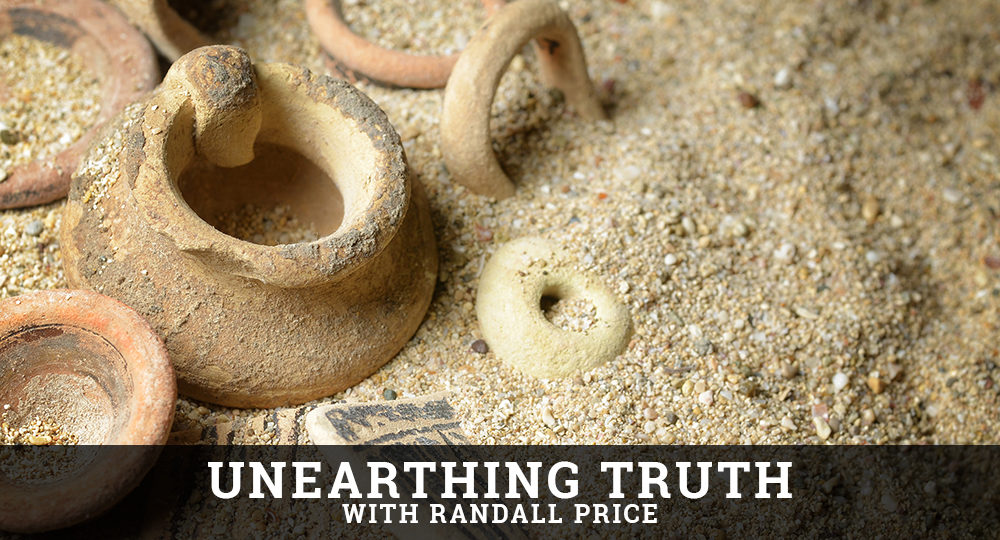Worship in the New World
For most people, the world of the Bible is an unfamiliar, alien realm. But for Bible-believing Christians, it is like the pleasant home of well-known friends. Beginning where the Bible begins, with the book of Genesis, I’d like to take you on an adventure into the past to unearth the truth of God’s Word for today.
Where did the worship of God begin? Some scholars suggest the Garden of Eden was the first sanctuary, seeing the imagery in the unique Hebrew terms used in Genesis 2—3 (elsewhere appearing only in Leviticus in connection with the Tabernacle and priests). The terms describe the approach of the divine Presence, the position of the sacred tree in the Garden, the Garden’s east-west orientation, Adam’s priestly position and duties, and the presence and purpose of the cherubim (a particular group of angels). These scholars see the Tabernacle as a reproduction of this first sanctuary that was lost in the fall of humanity but restored at Mt. Sinai, and they see the priesthood as fulfilling the mediatorial role necessary for fallen man to approach a holy God.
The need for substitutionary sacrifice first appeared in worship when Cain and Abel brought their offerings to the Lord (4:3–4). Since Scripture gives no explanation for this apparently established practice, we can only assume it was modeled after the divine action involved in killing animals to clothe the first couple (3:21). The next recorded worship is after Noah and his family exited the ark into their new post-flood world, built an altar, and sacrificed animals to the Lord (8:20).
Now archaeologists have uncovered what may be one of the world’s oldest worship sites after the flood. Known as Göbekli Tepe (Potbelly Hill), it is located in southeastern Turkey in a field in the center of the Haran Plain, where later Terah and his son Abram settled for a time (11:31; 12:1–5). Göbekli Tepe was created between 6000 and 7000 BC and reveals a lifestyle of agriculture, hunting, and gathering—which agrees with the biblical depiction of Noah and his descendants after the flood (9:20; 10:8–9). Though the area today is barren, archaeologists say it originally was a paradise.
Excavations at Göbekli Tepe have uncovered eight separate rings of megalithic standing pillars; and a geomagnetic survey revealed the presence of at least 20 more buried on the 22-acre site. It is remarkable that Göbekli Tepe, 6,000 years older than Stonehenge in England, was intentionally buried to preserve it because of its unique status in the ancient world.
These standing T-shaped pillars (the largest are 18 feet tall and weigh 16 tons) are adorned with engraved images of wolves, pigs, storks, foxes, fawns, scorpions, snakes, and unknown animals. In addition, some have images of headless people with hands outstretched, arms or hands reaching toward their loincloth-draped bodies. The archaeologists who excavated the site believe these depict priests. They also found a life-sized human statue, as well as pieces of others, that they identify as “guardians” of the Göbekli Tepe Sanctuary, which they call the world’s first temple.
The site’s location, 425 miles from Mt. Ararat where Noah’s ark came to rest, and the ubiquitous depictions of animals certainly recall the menagerie that left the ark and spread throughout the nearby lands.
The site’s ritual and ceremonial aspects imply that religious motivation helped develop civilization (rather than resulting from it as a need to maintain order) by drawing people together to construct such a worship center. That level of cooperation requires hierarchical organization, and certain features on the sculpted human figures suggest a patriarchal social system. Because of the bones at the site, some people also believe animal sacrifice and ritual feasts took place there.
Göbekli Tepe stands as evidence of worship in the new world and reminds us that our journey to the beginning of the Bible is on familiar ground.








